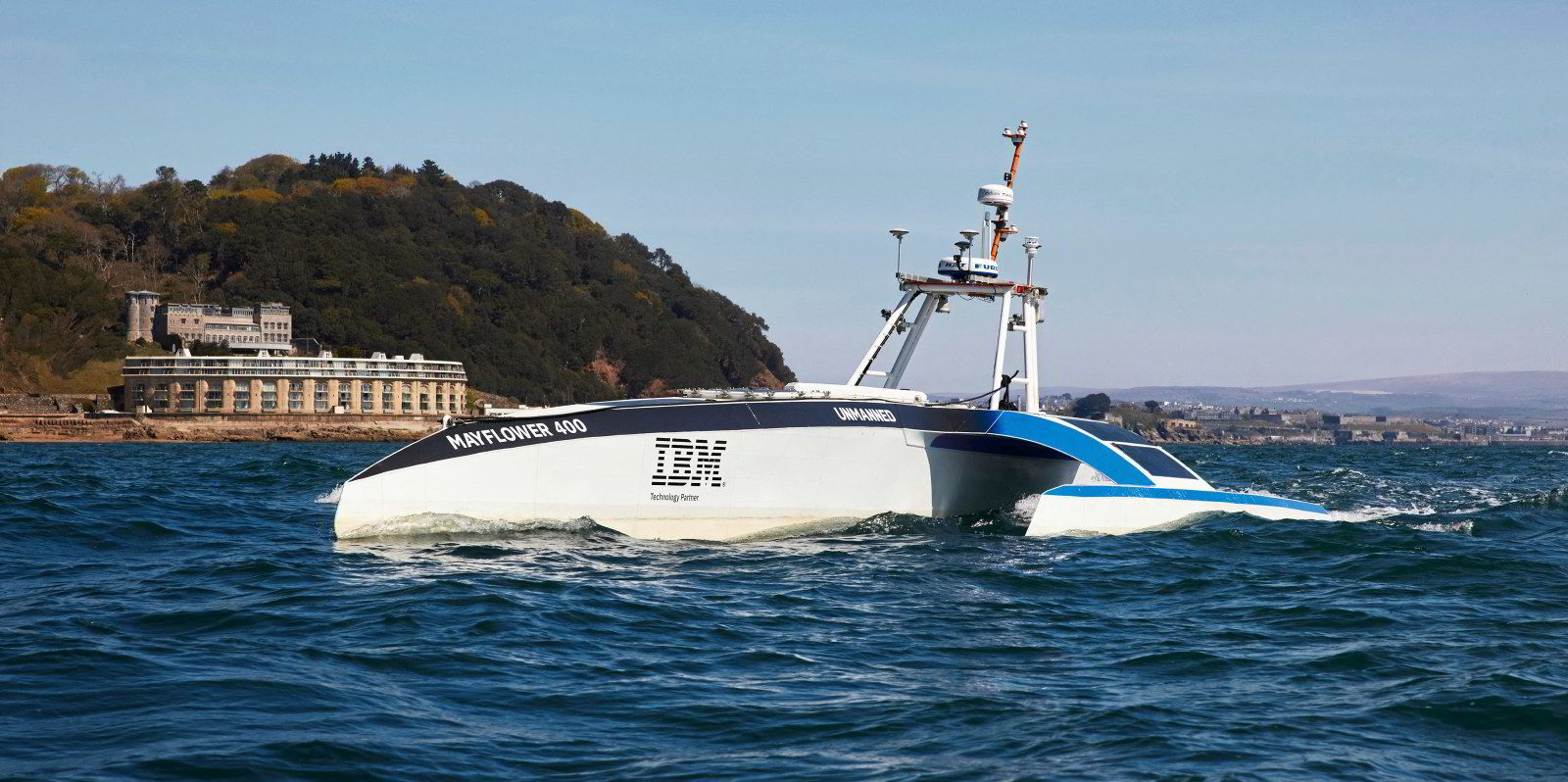Three days into its transatlantic crossing, the new Mayflower Autonomous Ship (MAS) has developed a technical glitch that looks likely to require turning the vessel round and heading back to the UK.
After setting sail from Plymouth in England on Tuesday, the MAS vessel’s IBM-designed Artificial Intelligence Captain reported on Friday that it had “developed a small mechanical problem and was going back to base to investigate further”.
With no one on board to repair it, the MAS has had to wait for a support vessel to join it and investigate what is causing the problem.
The AI Captain reported on Monday that the ship's computer systems are still operating.
It said: “The recovery vessel has arrived, and after a few checks we’ll head back to base.”
The 15-metre long aluminium trimarine, built by non-profit marine research organisation ProMare, was intended to arrive at its destination in the US within three weeks.
Its AI systems have been trained using over 1m nautical images so the vessel can detect other ships or hazards at sea and update its route via the data it gathers. It is powered by a hybrid-electric propulsion system fuelled by solar-powered batteries.
One of the developers’ greatest fears though had been that the vessel would suffer major problems mid-Atlantic – although a boon may be that it had not gone too far before the fault was discovered.
“My biggest fear about MAS ... gotta be lost at sea! Although I’d rather she was lost complexly than it just drifts aimlessly due to some silly error in the systems that we overlooked,” said Brett Phaneuf, founder of Promare and director of the MAS project ahead of the launch.
Up to 700 kg of research equipment is being carried by the MAS, which needs to be able to operate autonomously. Much of it is unable to connect to systems on land while in the middle of the ocean.
The MAS launch, which was initially planned to celebrate the 400-year anniversary of the original Mayflower crossing of the Atlantic, was already nearly a year late due to the Covid-19 pandemic.






